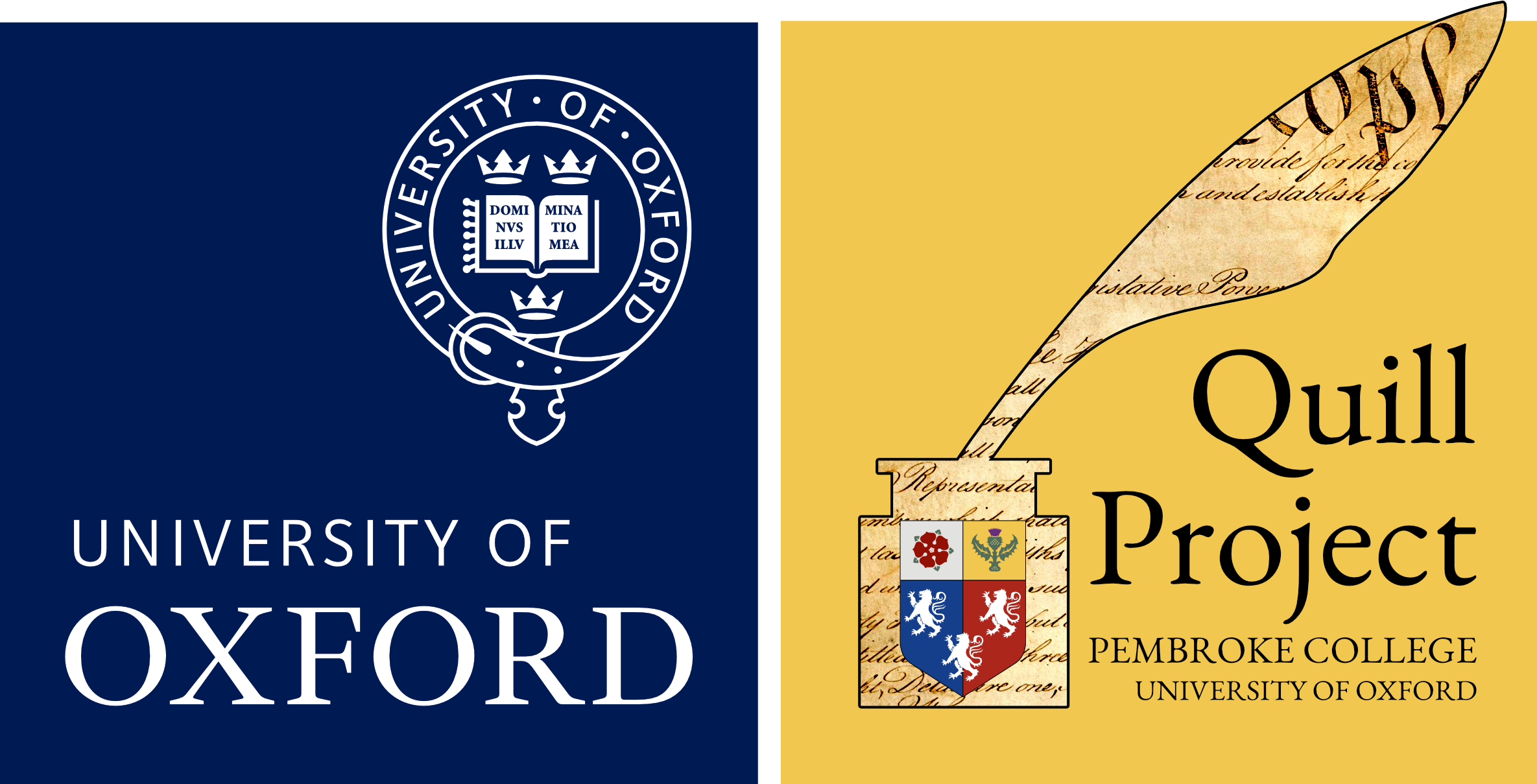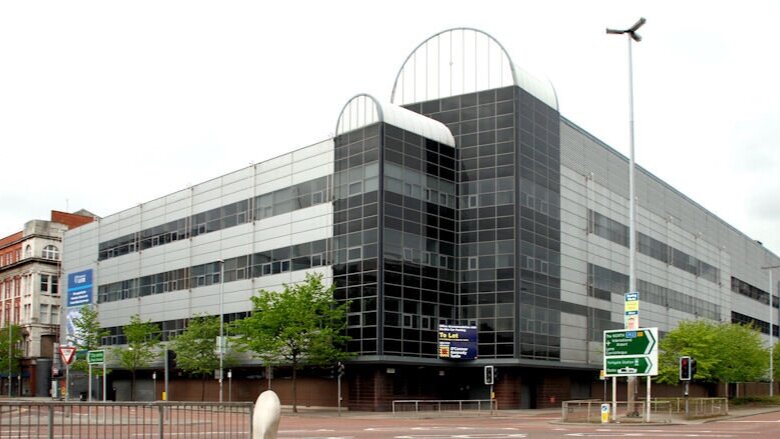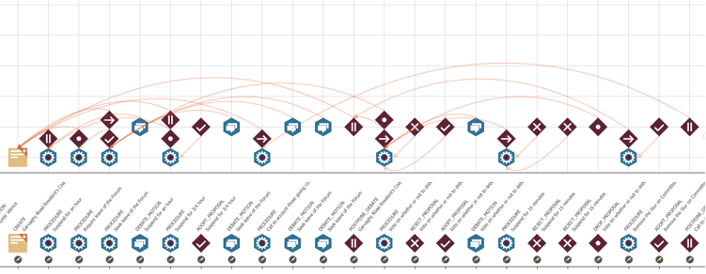A brief guide > The Quill approach > Meet the team > Brookes/Mayhew > The NI Forum
The Northern Ireland Forum for Political Dialogue
Isabel Fleming, an intern on the Writing Peace Project, shares some early reflections from her work with records of the Forum for Political Dialogue.
The Forum for Political Dialogue was created by the Northern Ireland (Entry to Negotiations etc.) Act 1996, and its sessions in Belfast ran from June 1996 to January 1998. The Forum was constituted by elected representatives from across Northern Ireland, using quite flexible electoral counting in order to allow smaller parties to join alongside the major parties. Sinn Fein were not permitted to join on grounds of continued violence, and the SDLP quickly abstained from the Forum, leaving a range of Unionist parties, as well as the Northern Irish Women’s Coalition, the Labour Party, and Alliance. Sessions generally involved consideration of motions relevant to everyday life in Northern Ireland and sometimes questioning of experts, or the consideration of reports from the various standing committees.
Interpoint Centre where the Northern Ireland Forum met from June 1996 to January 1998
© Copyright Albert Bridge and licensed for reuse under Creative Commons Licence
The Forum has not been accorded much scholarly attention. This could be for a number of reasons, not least its seeming failure. The minutes often descend into a large degree of chaos, with acrimonious exchanges between members, and disagreements over the rules which lasted for months. A key issue was the lack of specifically Nationalist representation after the departure of the SDLP: the Chairman was forced to overrule the adoption of motions that would not have found cross-community agreement, which had a strongly delegitimating effect in the eyes of many.
I found taking a detailed new look at the Forum a really exciting opportunity. Using Quill to model the Forum reveals a new way of looking at these minutes. At first glance, the minutes seem to be hours of long and winding speeches, and irrelevant obstructive points of order. But the model does not allow for grandstanding, arguments, brinkmanship or performativity. It forces us to look behind the rhetoric, and the seeming illogicality of Northern Irish Politics, and look at how this attempt at useful dialogue actually functioned. It can show us where there were surprising levels of agreement, and also display where the real sticking points were. These are very obvious in Quill’s visualisation display:
Screenshot from the Quill platform representing debate on the Garvaghy Road controversy.
This image shows a debate on the Garvaghy Road controversy: one motion is debate, paused, rejected, changed, dropped and then ultimately moved on from, with a real lack of positive decision making.
Quill can also help us to identify what the Forum actually decided upon, and the topics that it discussed. It draws the everyday nature of making decisions back into focus. The Peace Process was as much about learning to agree with one another on the small things, as it was about macro high-political decisions. The Forum agreed on the need for improvements to Cancer care in Northern Ireland, and the hope for improved education funding. Significant periods of time were spent discussing the BSE beef crisis too. Quill’s methodology helps to see how these were areas of agreement and consensus, rather than divisiveness, and shows the Forum working as it was envisioned as doing. Here we can see a report created by the Forum easily passing through the process of being accepted:
Screenshot showing a report presented, debated, and accepted by the Forum
The ‘process’ aspect of the Peace Process really comes to the fore. Historians often say that the personal is political, but using the Quill platform for these minutes also shows how the political is so personal. This is something that those involved are also keen to emphasise. The minutes are actually full of humour, and the growing relationships between all the members is clear. Some members, such as Ian Paisley, who we might generally expect to have been largely obstructive, appear to be more pragmatic in terms of the functioning of the Forum, if not flexible in their actual views.
As a recent graduate, this is my first research job, and my first involvement in a Digital Humanities Project. I had some knowledge of the Troubles from a module in my third year, but had no extensive knowledge of the period immediately preceding the Good Friday Agreement. Working on the project has involved a lot of trial and error, and has been a learning process, but what we have ended with is very promising. At times, the Quill methodology can be unwieldy to represent the Forum’s activities. It has taken adaptation, for example, to show the elements of the Forum which are not based around documents or decision making. In particular, the ‘special debates’ which allowed members to bring a topic of their choice for 5 minutes did not have a specific function that can be easily shown in the software. The confusion of the Chairman and the minutes taker on what was happening at points also showed up in the modelling sometimes too: it is difficult to reconstruct a decision if even those at the time couldn’t track what was happening in front of them. However, we hope that the team will come up with new ways to illuminate these issues.
Our model is currently nearing the recess for the General Election. It will be interesting to see what, if any, effect this will have on the workings of the Forum, and to see how the Forum’s efficiency and development will shift as it continues for longer.
The Quill model of the Northern Ireland Forum for Political Dialogue is a work in progress, with an expected publication date of July 2022.



